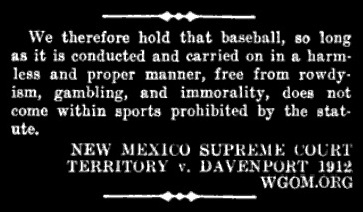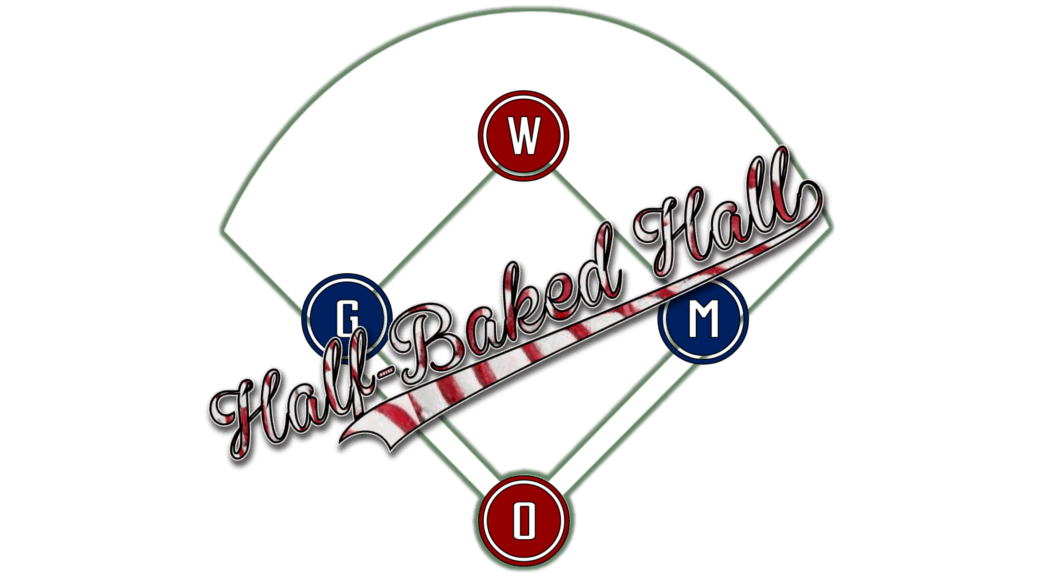Steve Carlton (93%) is your lone Half-Baked Hall entrant from 1988. Despite stuffing the ballot box, CarterHayes was unable to get anyone else in, though a few players will come back at a later time.
Graig Nettles: 71%
Ted Simmons: 57%
Don Sutton: 43%
Hall-of-Famer Bruce Sutter (5 votes) is permanently dumped, as are Ron Guidry (2 votes), Dave Concepcion (1 vote), and Jose Cruz (0 votes).
1997
Who would you not kick out of bed for eating crackers?
- Eddie Murray (45%, 13 Votes)
- Ryne Sandberg (45%, 13 Votes)
- Fernando Valenzuela (7%, 2 Votes)
- Greg Gagne (3%, 1 Votes)
- Brett Butler (0%, 0 Votes)
- Lee Smith (0%, 0 Votes)
- None of them! (0%, 0 Votes)
Total Voters: 13


The lack of respect for Sutter's HOF beard is disappointing.
So, there are two fairly certain locks.
Anyone going to bat for Butler, Valenzuela, or Smith?
I would love to vote for Valenzuela, but his peak was only six years and it wasn't quite Johan Santana level.
I’m a small HOF guy but I could maybe be convinced on Lee Smith.
Man, those were different times. A closer who didn't even strikeout 3 per nine.
Who would that be? Lee Smith averaged almost 9 for his career.
almost 9? almost HOF!
Ah geez, I'm a dummy. Looked at the wrong column.
Yeah, I'm on the fence with a leaning towards pro-Smith. He wasn't ever the most dominant pitcher of his era, but he was very good for a longer period of time than any of his peers, which is obviously how he got the record (along with the fact that he came into the league at the perfect time to capitalize on the dawn of the 1-inning closer). Seven all-star games (silly a metric as that is) imply that for a large portion of his career, he was one of the premiere closer sin the game. He also ranks high on the JAWS list among relievers whose WAR totals aren't inflated by lots of starts.
I don't think the Hall is as diminished by his presence in it as by, say... Morris.
Smith's JAWS: 24.8
Sutter's JAWS: 24.2
I can't take Smith seriously if we can't take Sutter seriously. Sutter had a higher peak. His main problem is that was all he had was peak. He's like the Dale Murphy of closers, I guess.
I am guessing that we are going to draw the relief pitcher line at Goose Gossage, with just him, Wilhelm, Rivera and Eck making the mark.
I think you're right. Thank you for talking me off the Lee Smith ledge.
Yeah, that's fair. The compilation of the save stat is the only thing that really gets him a look, and I don't expect that, say, John Franco, is going to get a lot of support when his name comes up. Heck, I'm not even sure how Hoffman will do when it comes to be that time.
I was looking at the JAWS/rWAR leaders among relievers last night. I didn’t vote for Firpo Marberry at the time, but would reconsider given his pioneering role. He doesn’t have the clean break between starting &relieving that Eckersley had, nor periods of starting & relieving like Smoltz, so he’s not exactly a standard candidate.
John Hiller’s intriguing. After putting up just 6.2 rWAR in his age 22–27 seasons, Hiller accumulated 24.9 rWAR across ages 29–37. The other relievers above the 30.0 rWAR level are Bobby Shantz, Tom Gordon, & Greg Swindell; all of them earned the majority of their rWAR during years when they were primarily starters.
I’ll have to think hard about Billy Wagner when the time comes. Voting for a guy with fewer than 1000 innings seems a bit silly, but that strikeout ratio gets my attention.
also, Hiller came back from having a heart attack in 1971 to set the then-MLB record for saves (38) in 1973. So, props for that. I had (still have, I think) his baseball card from the early/mid-70s.
Put him in the Canadian baseball HOF. 🙂
Hiller’s story is great. I can’t think of many guys who have come back from heart trouble, let alone an actual heart attack.
I love Hiller as a candidate. I also love Billy Wagner as his rate stats are otherworldly and his story is great too (broke his right arm twice so had to learn to throw with his left).
fwiw, Hoffman is waaaaay down on the career JAWS list for relief pitchers (20th, compared to 18th for Joe Nathan, 17th for Smith and 19th for Sutter), although he is 10th among relievers with fewer than 100 career starts (arbitrary, but a nice, round number).
Rivera, Wilhelm, Gossage, John Hiller, Lindy McDaniel, Stu Miller, Lee Smith, Joe Nathan, Sutter, Hoffman, Billy Wagner, Quis, Bob Stanley, Tekulve, Fingers rounding out the top 15.
Fingers’ mustache is inner-circle WGOM H-BH-worthy. Too bad his arm wasn’t quite as impressive.
Maybe we could start a Hair of Fame for guys like him, Oscar Gamble, etc.
That’d be cool. I’ve missed the headshot rundowns from the Old Basement days.
Poll is up. Ends on Sunday night.
Murray is right on the line for me. I'm more of a peak guy than longevity, but the guy mashed even at age 39 and had a couple MVP type seasons. I said yes.
I’d feel wrong if I didn’t acknowledge Gags’ position as the greatest fielding shortstop in Twins history. Watching him field grounders was a treat; his motion from catching to follow-through on his throw was so smooth. (Gags’ 12.4 dWAR is second behind George McBride, who played for the Senators from 1908–20. B-R awards McBride an impressive 22.4 dWAR.) He enjoyed some big World Series moments, and one very Metrodome Baseball! game in October 1986:
Thank for posting this. I did not appreciate him when I was a child because he had little power and the only thing I knew about defense was errors. However, whenever I watch highlights he always seems like a non-flashy wizard at short.
While he wasn't a superstar at the plate, he did everything a great defensive SS is supposed to do. He maybe could have been more selective on his stealing attempts, but he was a good baserunner and could lay down the bunts when needed.
Plus, you know, Count teh Ringz!
Not sure whether I voted twice or not (desktop and phone). But I only voted for Murray and Ryno. Both are pretty much at the HoF averages for their positions. Both seem plenty deserving.
Just once!